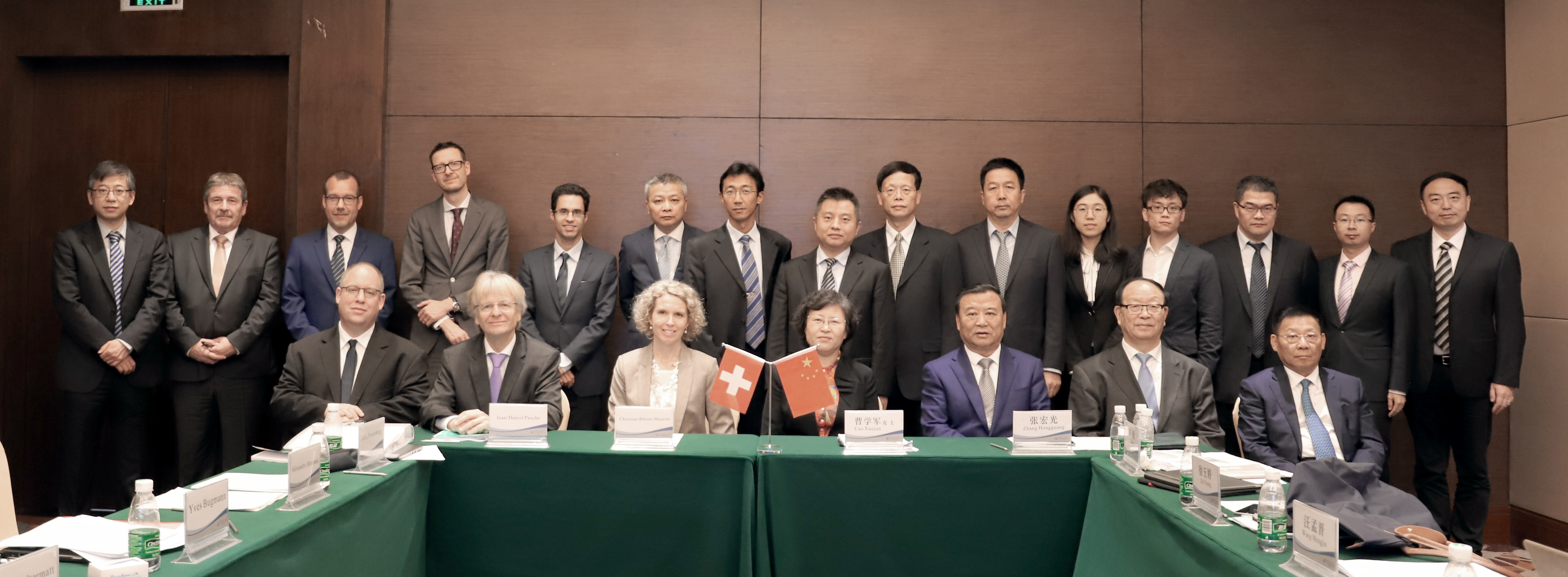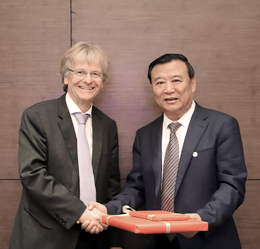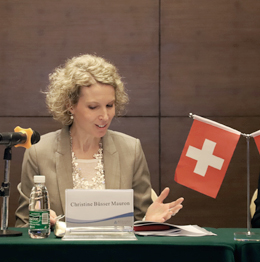
Established within the framework of the bilateral free trade agreement, the Swiss-Chinese working group met in Shenzhen on December 4th and 5th 2018, from which we provide this report
At the meeting, the Chinese delegation was led by Cao Xuejun, Deputy Director General at the Ministry of Industry and Informa-tion Technology (MIIT) and Zhang Hongguang, President of the China Horologe Association. The Swiss delegation was led by Christine Büsser Mauron, Head of the “Asia/Oceania Bilateral Economic Relations” Section at the State Secretariat for Economic Affairs (SECO), and Jean-Daniel Pasche, President of the FH.
The group’s work was first devoted to the Chinese regulations on hazardous sub-stances (RoHS 2 China) which came into force in July 2016. Some details were pro-vided on its implementation, in particular with regard to the “Compliance Management Catalog” which will enter into force on March 15th 2019 and that, as a result, work on the “Conformity Assessment System” will continue at least until then. With regard to customs duties and taxes, the Swiss delegation has reduced the weight of current levies, including consumption tax, which in all likelihood will not be revised in the near future. The SECO and the FH also reiterated their wish for an upcoming renegotiation of the customs duties set out in the free trade agreement that has been in force for four years now. On this occasion, the Chinese party indicated that the flat-rate tax on individual imports (“Parcel Tax” applied to personal consignments and imports) had been reduced on November 1st 2018, from 60 to 50% for watches with a value of more than 10,000 RMB, and from 30 to 25% for other watches.
The main issues dealt with by the working group were intellectual property protection and the fight against counterfeiting, which once again occupied again a substantial portion of discussions. Among the various topics covered, one might mention the persistence of highly visible and active counterfeit markets, such as Beijing’s Silk Market, as well as the recent and significant increase in “lookalike” copies, in other words counterfeit iconic models bearing often fanciful “pretext” brand names. Not to mention the sale of counterfeit watches on the Internet, which, because of its scale, has become the number one problem. On the latter issue, the Swiss delegation particularly stressed the legal and administrative difficulties that persist during intervention procedures with regard to hosting platforms. The fight against the illicit use of indications of origin also continues to call for substantial efforts, as abuses of the Swiss made watch label unfortunately still remain all too widespread.
Clearly, there is still a lot to be done in China to protect intellectual property. In its field of competence, the working group has so far made some progress of which the effects are in the process of making themselves felt. These include the hotline made avail-able by the Hong Kong FH Centre to assist in the authentication of brands/models, as well as lists provided by the FH of Chinese brands active in counterfeiting or misuse of the Swiss made label. At this last meeting, the Chinese delegation submitted a proposal for collaboration on training related to product authentication.
The second part of the meeting was devoted to a visit to Fiyta Holdings Ltd, during which participants were able to familiarize themselves with the company’s various activities, including manufacturing, assembly and distribution. (by the revue fh No.1 on January 17, 2019)
January 31, 2019


 News
News 
